Redwork embroidery has a great history dating back to the late nineteenth century. It is a simple style of “art needlework” in which the design is outlined on a white or off-white background with a contrasting color of thread. Nowadays, this stitch is commonly called backstitching or outline stitching.
When this style became popular, red thread was the easiest color to obtain. It was also colorfast, meaning it would not wash or “bleed” onto white fabric. Turkey Red is the name of a natural dye that became popular in North America in the mid-nineteenth century. Other dyes became available around 1875 and provided a more comprehensive range of colors, however, they would fade. Turkish red thread was more expensive but it was worth it because of its color. From 1910 to 1930, a dyed blue thread was popular. Today, we continue to use red thread with this embroidery style, as the red color contrasts well with the light background.
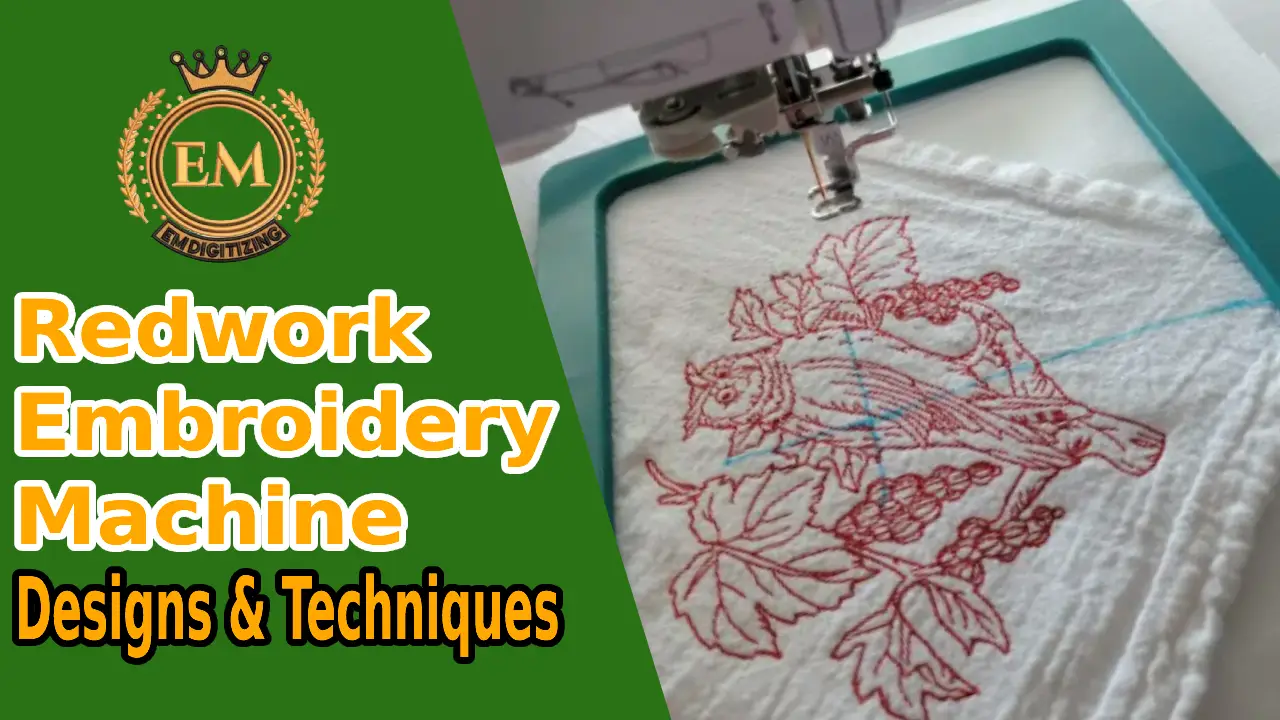
Embroidery Digitizing Services
What is Redwork Embroidery?
Redwork Embroidery is an ancient form of embroidery that can be traced back to Eastern Europe in the early 19th century.
The thread was dyed red and was the first colored cotton thread used in embroidery, before this colored thread was made of silk and could only be used by the wealthy.
This type of embroidery was popular because less thread was needed to create the embroidery design. It was also very quick to develop a design. In addition to these factors, the low cost meant that redwork embroidery quickly spread to other parts of the world.
What Stitches do you use in Redwork Embroidery?
Redwork embroidery uses very few stitches, which makes it great for embroidery learners. Redwork embroidery designs are outlined with little or no filled areas. Therefore, the free redwork embroidery patterns on this page are quick and easy to complete!
The main stitch used in redwork embroidery is the stem stitch, it is also known as the outline or back stitch. As redwork embroidery designs are outlined, this is the stitch that is most often used.
Other stitches include a satin stitch, which is used to fill small spaces in a design. There is also split stitching, and French knots are used to add small details to redwork embroidery. This page is full of resources for learning the basic stitches used in redwork embroidery!
Redwork Embroidery Technique
Enough with the history lesson! How do we actually do redwork? Because of its simplicity, redwork is a great starting place for new needle makers and young needle artists. The five types of stitches are easy to learn, and you just follow the lines of the printed pattern.
- A Running Stitch dips up and down the fabric, creating a line like a quilt. The goal is to place evenly spaced stitches to demonstrate skill.
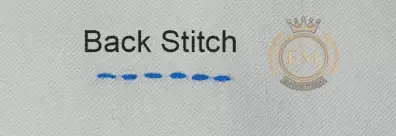 A Backstitch is a series of even stitches, usually worked from right to left, leading from the last stitch and then back through the opening of the previous stitch.
A Backstitch is a series of even stitches, usually worked from right to left, leading from the last stitch and then back through the opening of the previous stitch.
- The Stem Stitch is working from left to right. Again, with even stitches, these nest against each other to create a solid line. The thread was placed under the needle.
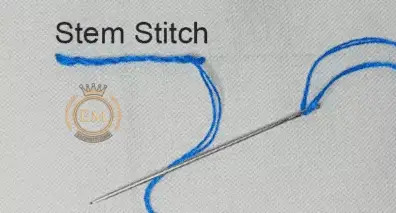
- The Outline Stitch is similar to stem stitch, but the thread is placed over the needle.
- The Kensington Stitch is what my mom would call a split stitch. Since the floss comes in 6 strands, you can use 2, 4, or 6 strands. The floss splits, creating little hearts or “eyes of the needle.” This stitch was the hardest to master because I had to count the strips, but it gets easier.
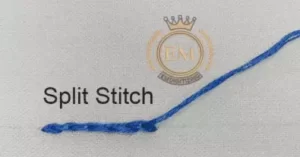
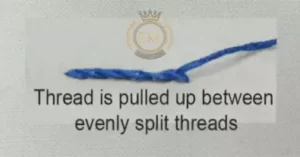
Redwork Embroidery Patterns
Most of the patterns were very easy to sew. Animals, flowers, toys, and children are all popular themes. Pictures of famous buildings and people were also stitched, as well as lively storybooks and nursery rhyme characters. Magazine publishers gave samples to promote subscriptions. As the equipment became more readily available, sometimes they would offer kits. Wealthy women used the images as models in children’s coloring books and other advertisements.
Stamping cloth – transferring designs onto cloth – became a source of income for many women. Some manufacturers hired professional stampers, and some women did this side job from home. Around 1870, transfers were developed on iron. Using a hot iron was an easy way to apply the design to the fabric.
Pre-printed squares that were ready for embroidery were sold. Their actual value is about a penny, so they were commonly called “penny squares”. These squares were embroidered and sewn together into bedspreads or quilts. In addition, children were given penny squares to learn and practice hand embroidery.
Redwork Machine Embroidery Designs
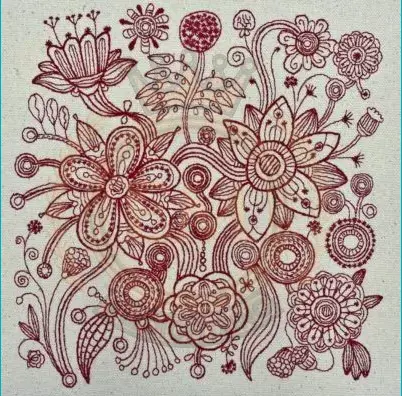
As with any embroidery technique, not all embroidery designs are created equal. When using designs on your embroidery machine, you want to make sure they will run smoothly and not ruin your garment.
We recommend always using an embroidery design that you know will give you the best results. Emdigitizing is sure to always give you the best results as our redwork designs are of the best quality and personally digitized by the world’s most acclaimed digitizer.
With hundreds of redwork embroidery designs to choose from, we’re sure there’s a redwork embroidery design to suit your creative needs. You can view many of our Emdigitizing Embroidery Designs by clicking here.
Digitizing Custom Redwork Machine Embroidery Designs
Hatch embroidery software has a redwork setting designed to give exactly two passes to create an even stitch of traditional redwork. Honestly, it’s compelling, and it provides the ability, with practice, to digitize hand lettering and reproduce designs.
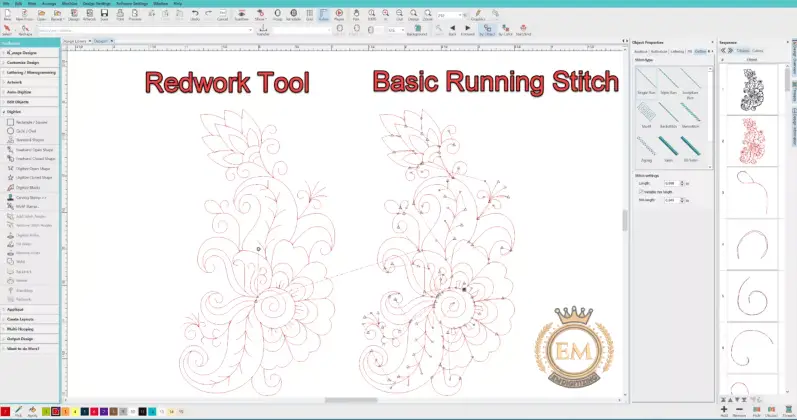
Sounds too good to be true? It’s not, but it requires you to be a bit of a detective. The redwork needs to be expertly routed so that the lines flow from one to the other.
When looking at a pattern, you need to figure it out before you start jumping and clicking. Figure out your flow and work from a logical start to finish. You will need to stitch your start and stop points (green plus and red diamond) from person to person to work as a bucket brigade.
Ideally, you’ll digitize the entire pattern as one pass with no trim, but if you can’t (say you’re working on a quilt square with four repeating motifs), then Be sure to start and stop each part of the motif flow.
Conclusion
Silhouettes of children or carefully digitized images of people are excellent, albeit challenging, subjects. In the spirit of traditional redwork, use turkey red, blue, purple, or green, and let yourself get creative with just one color.
Now if you want to create redwork but don’t want to digitize your designs, don’t forget to check out Emdigitizing’s huge collection of standard redwork embroidery designs by clicking here.
Redwork or linework is a simple form of “art needlework” in which the outline of a design is stitched onto white or off-white fabric in red thread or a different color, but it is usually a one-color design. . Beginning in the 19th century, redwork today is commonly called backstitching or outline stitching.
The main stitch used in redwork is the backstitch or outline stitch, formerly known as the Kensington stitch. Redwork was a common introductory form of embroidery taught to children in the 19th and 20th centuries.
The redwork designs were basic and rather whimsical line drawings of children, birds, flowers, a water pump, and other objects found around every home at the time.
Redwork quilts, or quilts consisting of outline embroidery stitches in red thread, were popular as fundraising quilts in the late 1800s and early 1900s.
Due to the widespread popularity of redwork today, hundreds, perhaps thousands, of vintage designs have been reproduced for use. Redwork became popular in the late 1870s. The name is derived from the embroidery thread known as Turkey Red.
